Login
Registration enables users to use special features of this website, such as past
order histories, retained contact details for faster checkout, review submissions, and special promotions.
order histories, retained contact details for faster checkout, review submissions, and special promotions.
Forgot password?
Registration enables users to use special features of this website, such as past
order histories, retained contact details for faster checkout, review submissions, and special promotions.
order histories, retained contact details for faster checkout, review submissions, and special promotions.
Quick Order
Products
Antibodies
ELISA and Assay Kits
Research Areas
Infectious Disease
Resources
Purchasing
Reference Material
Contact Us
Location
Corporate Headquarters
Vector Laboratories, Inc.
6737 Mowry Ave
Newark, CA 94560
United States
Telephone Numbers
Customer Service: (800) 227-6666 / (650) 697-3600
Contact Us
Additional Contact Details
Login
Registration enables users to use special features of this website, such as past
order histories, retained contact details for faster checkout, review submissions, and special promotions.
order histories, retained contact details for faster checkout, review submissions, and special promotions.
Forgot password?
Registration enables users to use special features of this website, such as past
order histories, retained contact details for faster checkout, review submissions, and special promotions.
order histories, retained contact details for faster checkout, review submissions, and special promotions.
Quick Order
PathPlusTM ENO1 / Alpha Enolase Antibodies
ENO1 (alpha-enolase) is one of three enolase isoenzymes found in mammals. The alpha (ENO1), gamma (ENO2) and beta (ENO3) subunits form hetero- and homodimers that serve as glycolitic enzymes. ENO1 catalyzes the conversion of 2-phosphoglycerate to phosphoenolpyruvate. It also functions as a structural lens protein (tau-crystallin) in the monomeric form. The shorter isoform of ENO1 has been shown to bind to the c-myc promoter and functions as a tumor suppressor. It has also been identified as an autoantigen in Hashimoto encephalopathy. ENO1 is often overexpressed in cancer, including breast, lung, thyroid, pancreatic, prostate, and hepatocellular cancers as well as neuroendocrine tumors and neuroblastomas. While ENO1 is present in nearly all tissues, the dimer of ENO1 and ENO2 is specifically expressed in microglia, astrocytes and oligodendrocytes in the brain. This dimer is known as NSE, Neuron Specific Enolase, and it is thought to be involved in the regulation of neuronal differentiation, growth, and survival. NSE is considered a useful marker for neuronal damage, as higher levels of NSE correlate with degree of injury and with poor patient prognosis in neurodegenerative diseases and brain injury.
References: J Bio Chemi. 275 (8): 5958–65, PMID: 10681589; Experimental Cell Research. 335 (2): 216–23, PMID: 26024773; Molecular Cancer. 13: 65,PMID: 24650096; Brain Sci. 2018 Feb; 8(2): 33, PMID: 29463007; Neurol Res. 1998 Jul; 20(5):418-20, PMID: 9664588;
9 PathPlusTM Antibodies
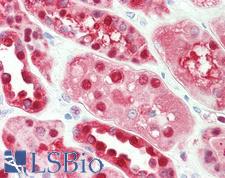
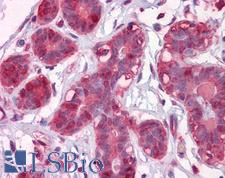
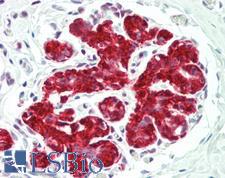
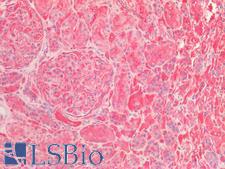

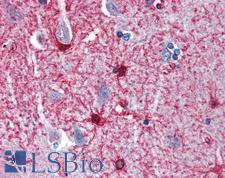
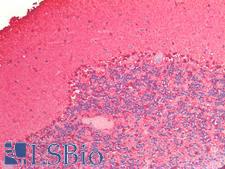
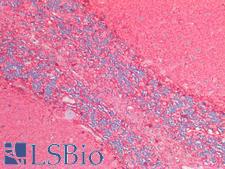
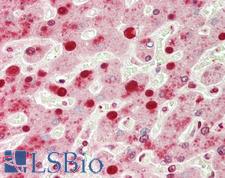
☰ Filters
Products
Antibodies
(9)
Type
Primary
(9)
Target
ENO1 / Alpha Enolase
(9)
Reactivity
Human
(9)
Mouse
(5)
Rat
(3)
Application
IHC
(6)
IHC-P
(9)
WB
(9)
ELISA
(5)
ICC
(1)
IF
(2)
Host
rabbit
(5)
mouse
(4)
Product Group
PathPlus Neuro
(9)
Isotype
IgG
(3)
IgG1
(2)
IgG1,k
(1)
IgG2b,k
(1)
Clonality
monoclonal mc
(4)
polyclonal pc
(5)
Clone
12
(1)
786CT6.6.4
(1)
8G8
(1)
9
(1)
Format
Unconjugated
(9)
Epitope
aa199-434
(1)
aa246-295
(1)
Publications
No
(8)
Yes
(1)

Neuroscience
ENO1 / Alpha Enolase Rabbit anti-Human Polyclonal (aa199-434) Antibody
Mouse, Human
ICC, IHC, IHC-P, WB
Unconjugated
50 µl/$375

Neuroscience
ENO1 / Alpha Enolase Mouse anti-Human Monoclonal (8G8) Antibody
Human
ELISA, IF, IHC, IHC-P, WB
Unconjugated
50 µg/$375

Neuroscience
ENO1 / Alpha Enolase Mouse anti-Human Monoclonal (786CT6.6.4) Antibody
Mouse, Human
IHC, IHC-P, WB
Unconjugated
200 µl/$375

Neuroscience
ENO1 / Alpha Enolase Rabbit anti-Human Polyclonal Antibody
Mouse, Rat, Human
IF, IHC-P, WB
Unconjugated
50 µl/$375

Neuroscience
ENO1 / Alpha Enolase Mouse anti-Human Monoclonal (9) Antibody
Human
ELISA, IHC, IHC-P, WB
Unconjugated
50 µl/$375

Neuroscience
ENO1 / Alpha Enolase Rabbit anti-Human Polyclonal (aa246-295) Antibody
Human
IHC, IHC-P, WB
Unconjugated
100 µl/$375

Neuroscience
ENO1 / Alpha Enolase Rabbit anti-Human Polyclonal Antibody
Mouse, Rat, Human
ELISA, IHC-P, WB
Unconjugated
60 µl/$375

Neuroscience
ENO1 / Alpha Enolase Rabbit anti-Human Polyclonal Antibody
Mouse, Rat, Human
ELISA, IHC-P, WB
Unconjugated
60 µl/$375

Neuroscience
ENO1 / Alpha Enolase Mouse anti-Human Monoclonal (12) Antibody
Human
ELISA, IHC, IHC-P, WB
Unconjugated
50 µl/$375
Viewing 1-9
of 9
product results











